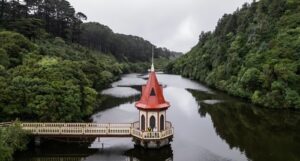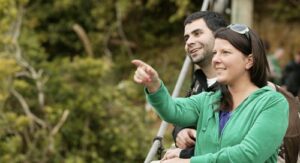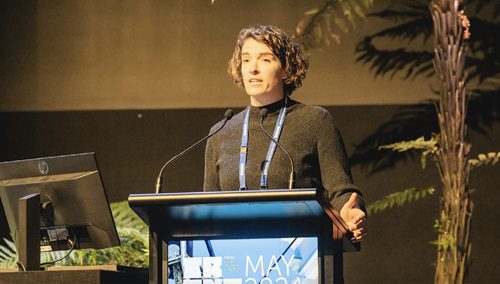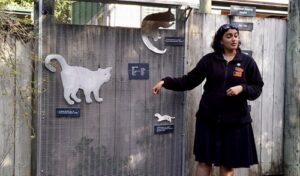 Kiwis are returning to the wild in the hills around Wellington, and many other native bird species are flourishing alongside them, thanks to the efforts of the remarkable Zealandia Wildlife Sanctuary in New Zealand’s capital.
Kiwis are returning to the wild in the hills around Wellington, and many other native bird species are flourishing alongside them, thanks to the efforts of the remarkable Zealandia Wildlife Sanctuary in New Zealand’s capital.
The return of the kiwi is a significant turnaround in a world where extinctions, sadly, are all too common. The achievement is so remarkable that it gained mention on the front page of the New York Times and was subsequently re-tweeted by American film star Leonardo DiCaprio.
Danielle Shanahan, Chief Executive of Zealandia, explained the sanctuary’s work to the media at TRENZ in Wellington last week. Many TRENZ delegates had seen the ecosanctuary’s work themselves, having visited it with a family.
Zealandia is a living, breathing example of how tourism can transform people’s lives with nature.
“Globally, we are facing devastating losses of nature,” Shanahan said, adding that about 200 species were vanishing yearly.
“But Wellington is now one of the only cities in the world where bird biodiversity is increasing – not decreasing.
“The Zealandia ecosanctuary was founded and is now sustained through regenerative tourism and community spirit. With over 500 volunteers, it stands as a testament to two decades of unwavering community dedication to a 500-year vision of environmental restoration. Zealandia’s story aims to inspire every visitor to reverse the loss of nature in their own community.”
In late 2023, kiwi chicks hatched in the wild near Wellington for the first time in 150 years. These are the first chicks produced from a recently established adult kiwi population on the scrub-covered hills south and west of the city.
Their return was preceded by an epic collective effort to set up a grid of 4600 mustelid traps across 24,000 hectares. Mustelids are the family of animals to which weasels and stoats belong.
The trap network was essential. In the wild, with no predator control, most or all of the chicks would have been killed before they reached the one-kilogram weight at which they can defend themselves from stoats – the primary threat to kiwi chicks.
“Across the Capital Kiwi Project area, over 1000 stoats have been removed from the project area and we’ve consistently hit the monitoring targets to enable kiwi to return,” Shanahan said.
Sixty-three kiwi have been translocated into the landscape (released to Terāwhiti Station in November 2022 and May 2023).
Signs are promising: birds are pairing up, gaining weight, setting up territories, and breeding. About 50 more kiwis were released in March. 
Shanahan said the tui and kaka birds were also flourishing around Wellington along with other native birds whose numbers had been so reduced that they were scarce a few decades ago. Tui were once so rare that in the 1990s, only about 30 pairs remained, and it was feared they would go extinct. Now, they are breeding in Zealandia and flying off around the North Island to re-establish themselves.
“The well-being of humanity is inextricably linked with the welfare of the other species that we share the planet with,” Shanahan said.
“Together, we are creating the world’s first predator-free capital city,” Shanahan said, adding that 97% of Wellington residents supported that concept.
Getting rid of introduced predators benefits other species took not just birds. For the first time in more than seven years, critically endangered short-tailed bats have been recorded in the Wellington region.
These mammals, the rarest in New Zealand, were feared extinct in the lower North Island until acoustic monitoring over summer recorded their presence.
Written by Peter Needham at TRENZ in Wellington, New Zealand





















